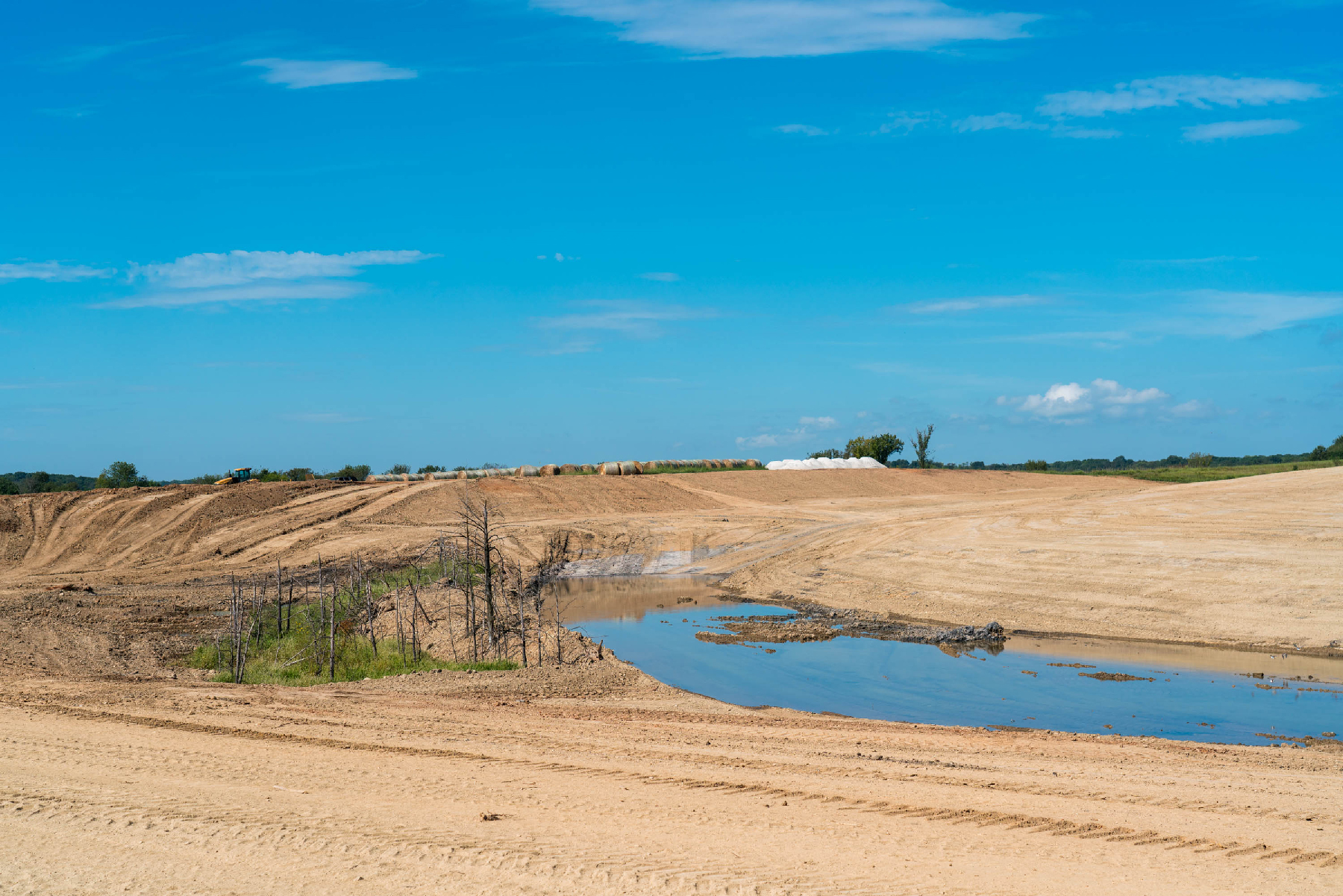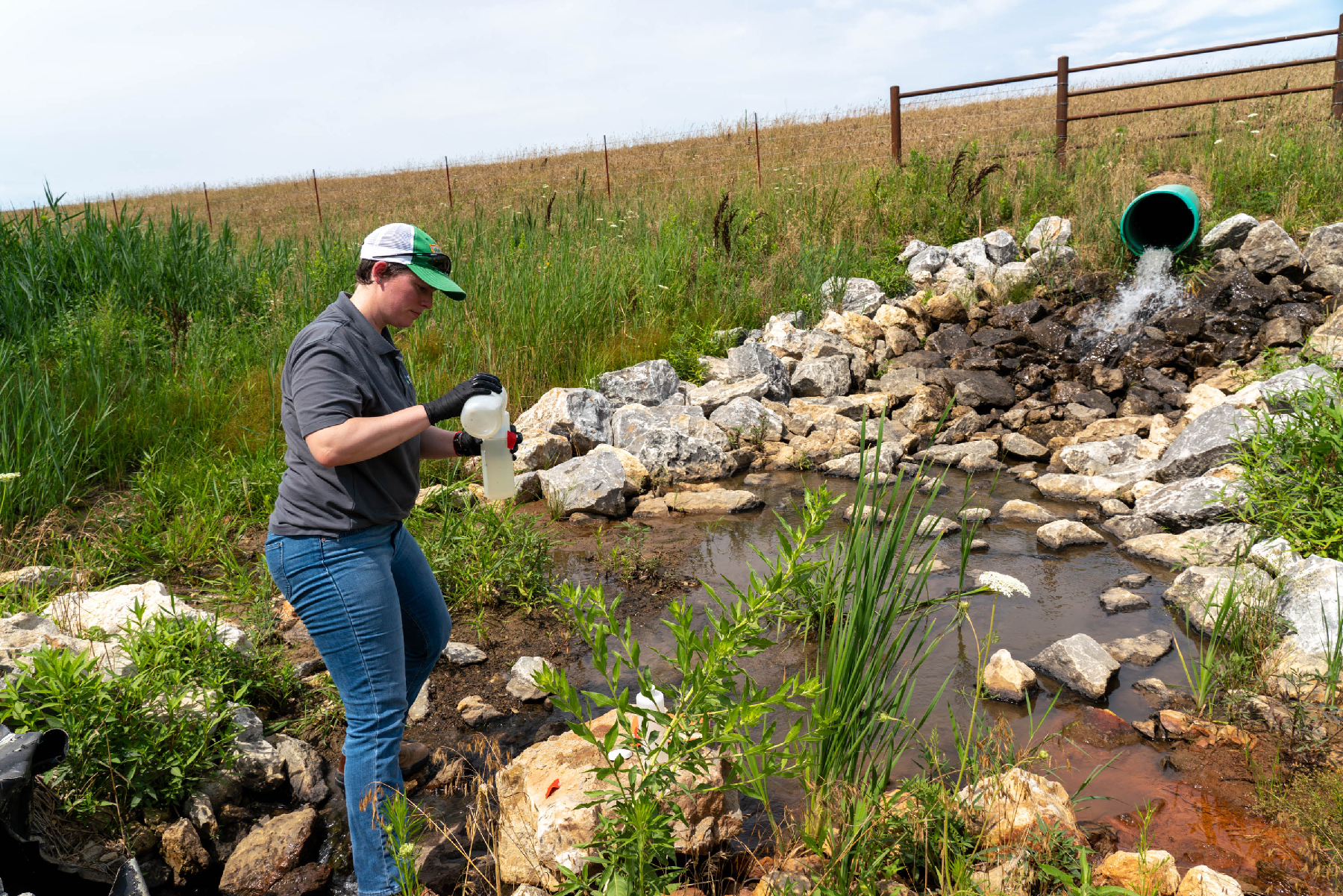Megan Moore, an environmental specialist with the department’s Land Reclamation Program, collects a water sample at a reclamation project site.
MoDNR photo by Ben Nickelson
Published by
on
Minerals play a critical role in our daily lives, and they contribute greatly to Missouri’s economy. The most recent U.S. Geological Survey report about mineral commodities identified Missouri as the ninth largest producer of nonfuel minerals in the United States for 2021, with a commodity value of $3.3 billion. These nonfuel minerals are Portland cement, lead, lime, industrial sand and gravel and crushed stone.
Development of Missouri’s abundant limestone supply is just one example of the important role geology plays in our state’s economy. The department’s Missouri Geological Survey produces and disseminates geologic and hydrologic information related to limestone and other important mineral resources to facilitate responsible development.
The department’s Land Reclamation Program issues permits to mine the resources, verifies that mineral resources are extracted in an environmentally sound manner through various regulatory activities and makes certain that mine lands are ultimately reclaimed for beneficial use.
The program works with the Missouri Mining Commission, a governing body that represents the governor and the department in matters related to mineral extraction regulations. The department is also a member of the Interstate Mining Compact Commission, a multi-state governmental organization supporting natural resources and related environmental protection, mine safety and health interests of its member states.
Missouri has approximately 36,000 acres of mines dedicated to industrial minerals, including limestone, gravel and clay quarries. There also are 1,950 acres of coal-mined land that require monthly inspections. The market for Missouri coal is limited; only one producing coal mine remains, with six other mines in reclamation.


Although coal mining in Missouri has decreased in recent years, the need to reclaim any land previously disturbed by strip mining remains. Businesses and communities have worked diligently with the department to clean up these mines. In fact, more than 5,000 cumulative acres have been returned to productive use through 2022.
In 2022, the program received approximately $2.8 million in funds from a federal coal tax that has allowed continued efforts to clean up coal-mined lands affected prior to 1977.
A project completed in November 2021 reclaimed approximately 35 acres of abandoned coal mine lands. A dam that had breached and washed out a public road was re-established, mitigating the release of polluted waters from the previously mined land to the downstream creek network. This returned what had become an iron-rich, sediment-laden marshy creek back to a water impoundment suitable for wildlife habitat and livestock water supply.
When asked whether he believed the use of federal coal tax funds was appropriate for the type of work conducted on his property, landowner Mick Massa responded, “Yes, I think some of these old [coal] works need some work done on them.” As for his opinion of the work completed by the program, he said, “it was better than I expected. I’m 100% satisfied.”
Learn more about mining, land reclamation and the commissions on the department’s Mining and Land Reclamation webpage.





